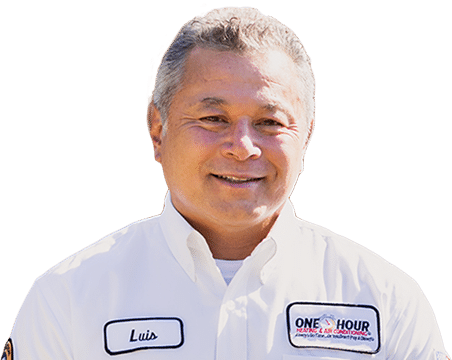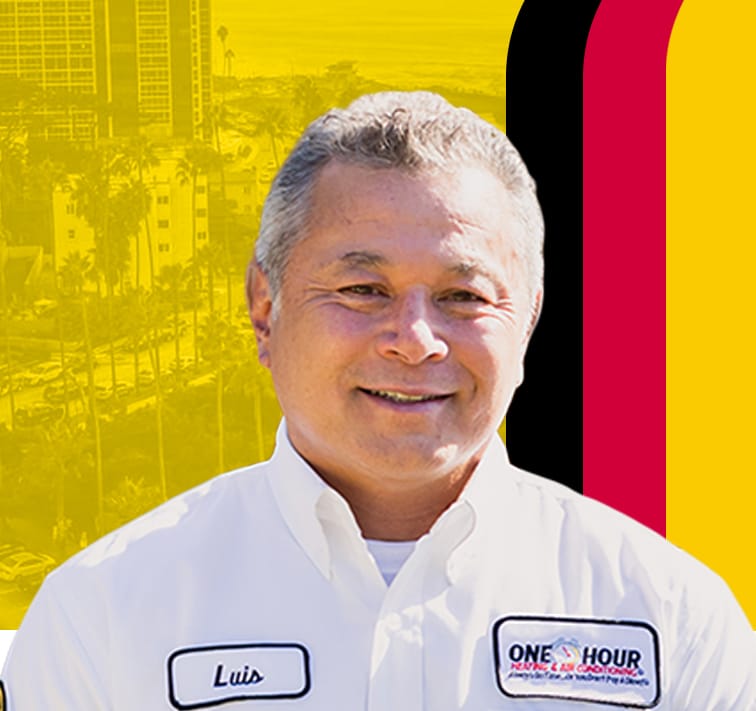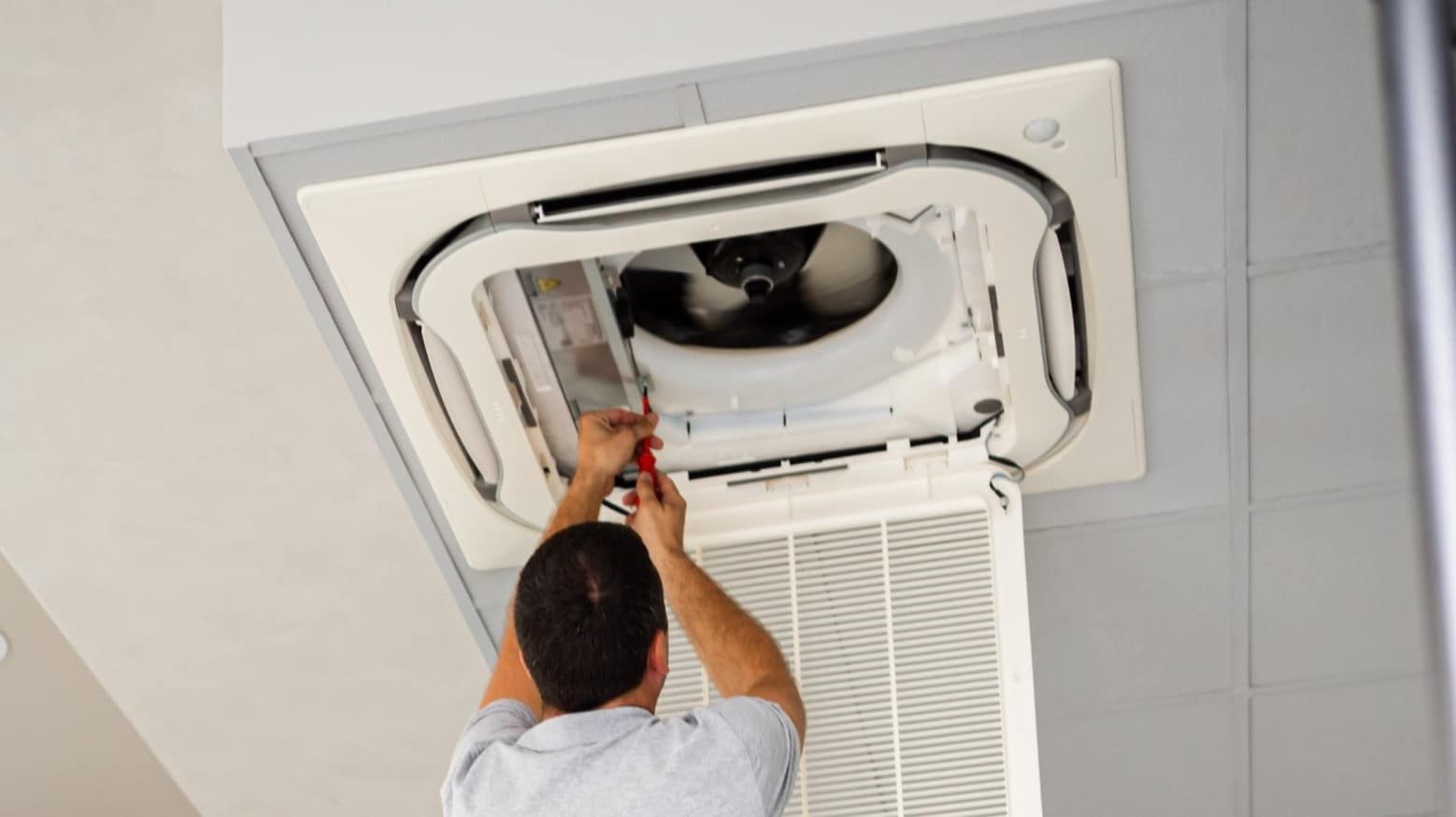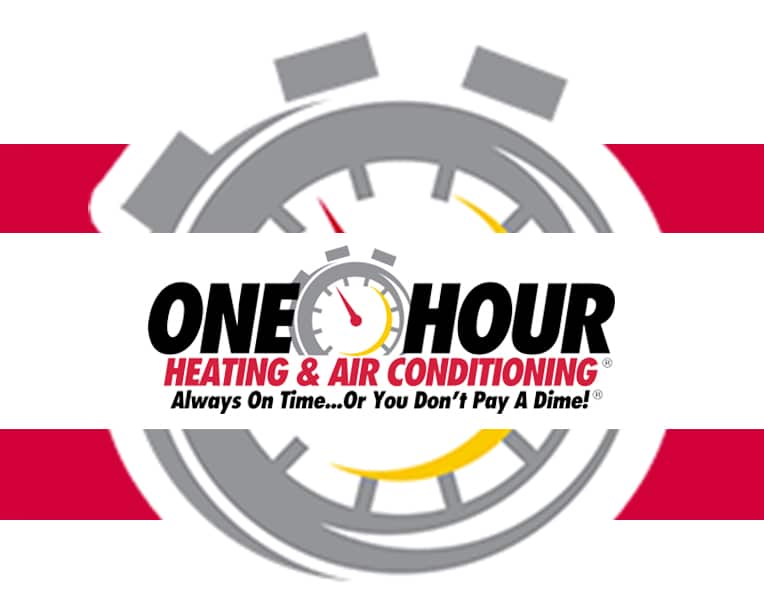Wondering how you can keep your historic home comfortable without sacrificing its unique charm? Finding the perfect HVAC solutions for these classic properties can be a daunting task.
Whether you live in the sunny climes of San Diego, CA, or the historic neighborhoods of El Cajon, CA, balancing modern comfort with architectural preservation is crucial.
Let’s explore how to navigate the challenges of updating your historic home’s HVAC system while maintaining its timeless appeal.
Understanding HVAC Challenges in Historic Homes
Historic homes have unique structural considerations that can complicate HVAC installations. These buildings weren’t designed with modern heating, ventilation, and air conditioning in mind.
Their walls are often thicker and made of materials that aren’t common in today’s construction. This means running ducts and installing modern systems can be quite a puzzle.
Another critical factor is the preservation of architectural integrity. Historic homes are often protected by guidelines that prevent significant alterations to their appearance.
This makes it essential to find HVAC solutions that won’t detract from the home’s original charm. For example, in areas like San Diego, CA, and El Cajon, CA, where historic properties are cherished, maintaining that old-world aesthetic is crucial.
These unique challenges mean that finding the right HVAC solutions for a historic home requires careful planning and a good understanding of both the building’s needs and the available technology.
Benefits of Modern HVAC Systems for Historic Properties
Energy Efficiency
Modern HVAC systems are designed to be much more energy-efficient than their older counterparts. This means lower utility bills and a smaller carbon footprint, which is great for both your wallet and the environment.
Advanced technologies in these systems allow them to operate using less energy while providing the same, if not better, levels of comfort.
By reducing energy consumption, you not only save money but also contribute to a more sustainable future. Energy-efficient systems are a smart investment for any homeowner looking to cut costs and reduce environmental impact.
Enhanced Comfort Without Compromising Aesthetics
Today’s heating and cooling solutions can be seamlessly integrated into your historic home. Systems like ductless mini-splits or high-velocity HVAC systems can provide excellent climate control without requiring extensive modifications that might alter your home’s original design.
These modern systems are designed to be discreet, preserving historical aesthetics while ensuring optimal comfort. You can enjoy the best of both worlds – the charm of a historic home and the convenience of modern technology. This balance is crucial for maintaining the unique character of your property.
Improved Indoor Air Quality
Modern HVAC systems come with advanced filtration options that help remove dust, allergens, and other pollutants from the air. This can significantly improve the indoor air quality in your home, making it a healthier place to live.
High-efficiency particulate air (HEPA) filters and other advanced filtration technologies can capture a wide range of contaminants, providing cleaner, fresher air.
Better indoor air quality can reduce respiratory issues and allergies, contributing to overall well-being. Investing in a modern system means investing in the health of everyone in your household.
Increased Property Value
Installing a modern HVAC system can increase the value of your historic home. Potential buyers often look for properties that offer the perfect blend of historical charm and modern convenience.
A new, efficient heating and cooling system can be a major selling point. It shows that the home is well-maintained and up-to-date with current standards, making it more attractive to buyers.
Additionally, the promise of lower energy bills and enhanced comfort can justify a higher asking price. Upgrading your system is not just an improvement for your current living conditions, but also a strategic move for future resale value.
Choosing the Right HVAC System for Your Historic Home
Factors to Consider
Start by assessing the size of your home and the specific climate in your area. For instance, San Diego, CA, has a mild climate that might not require the same HVAC solutions as a more extreme environment.
Consider your budget, as some HVAC solutions may be more cost-effective in the long run despite higher initial costs. The existing structure of your historic home is crucial, as older buildings might have unique layouts or materials that complicate modern system installations.
Finally, any preservation guidelines or restrictions in your area could limit the types of modifications you can make, necessitating more discreet HVAC solutions.
Tailored Solutions for Different Architectural Styles
Historic homes come in various styles, each with unique architectural features that require specific HVAC solutions. Victorian homes often have high ceilings and large windows, affecting heating and cooling efficiency.
Tailoring your HVAC solutions to these characteristics is essential for maintaining comfort without compromising the home’s historic charm. Colonial homes may have smaller, more compartmentalized spaces that need different HVAC solutions for optimal air distribution.
High-velocity systems work well for homes with limited ductwork space, providing efficient climate control without extensive modifications. Ductless mini-splits can preserve interior aesthetics while offering flexible installation options and efficient performance.
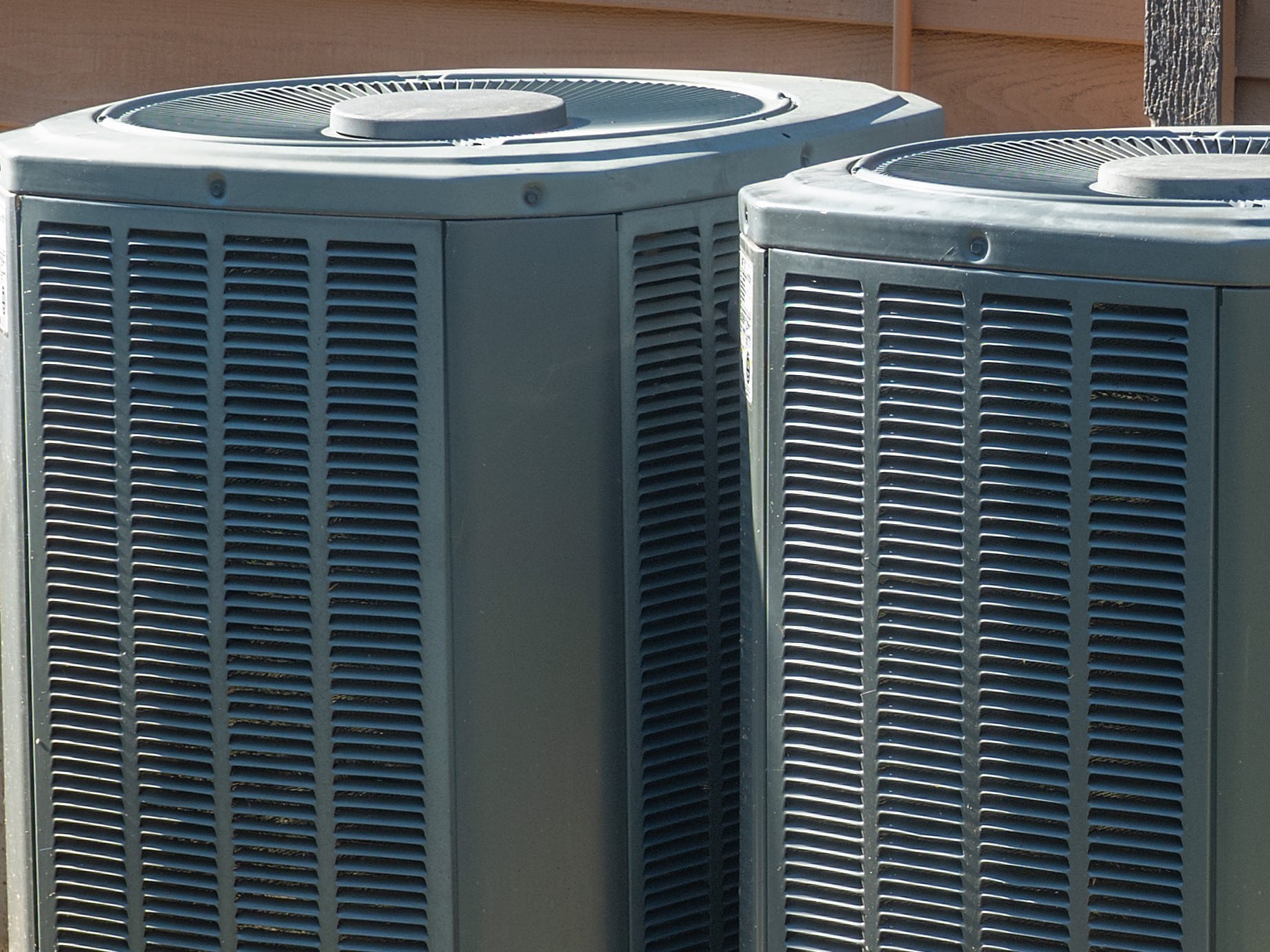
Types of HVAC Systems Suitable for Historic Homes
Central Air Conditioning Systems
Central air conditioning systems are ideal for providing consistent cooling throughout your home. They can be integrated discreetly, ensuring your home stays comfortable without detracting from its historic charm.
These systems distribute air through a network of ducts, offering uniform temperature control. By choosing central air conditioning, you can maintain the structural integrity of your historic home while enjoying modern comfort.
Ductless Mini-Split Systems
Perfect for homes where installing ductwork is challenging, ductless mini-split systems are highly efficient and offer flexible installation options. They consist of an outdoor unit and one or more indoor units, making them an excellent choice for maintaining the aesthetics of your historic property.
These systems allow for individual room control, enhancing energy efficiency and comfort. Ductless mini-splits are particularly beneficial in preserving the original design of your historic home.
Geothermal Heat Pumps
Using the earth’s stable temperature, geothermal heat pumps provide efficient heating and cooling. While the initial installation cost can be higher, they offer significant long-term savings and are environmentally friendly.
These systems involve burying a series of pipes underground, which transfer heat to and from your home. Geothermal heat pumps are a sustainable option that reduces energy consumption and aligns with the preservation goals of historic homes.
High-Velocity HVAC Systems
High-velocity systems use small, flexible ducts that can be easily routed through walls, ceilings, and floors without significant modifications. They are particularly suitable for historic homes where preserving architectural integrity is crucial.
These systems deliver air at high speed, ensuring quick and even temperature distribution. High-velocity systems offer an unobtrusive solution that blends seamlessly with the original architecture of your historic property.
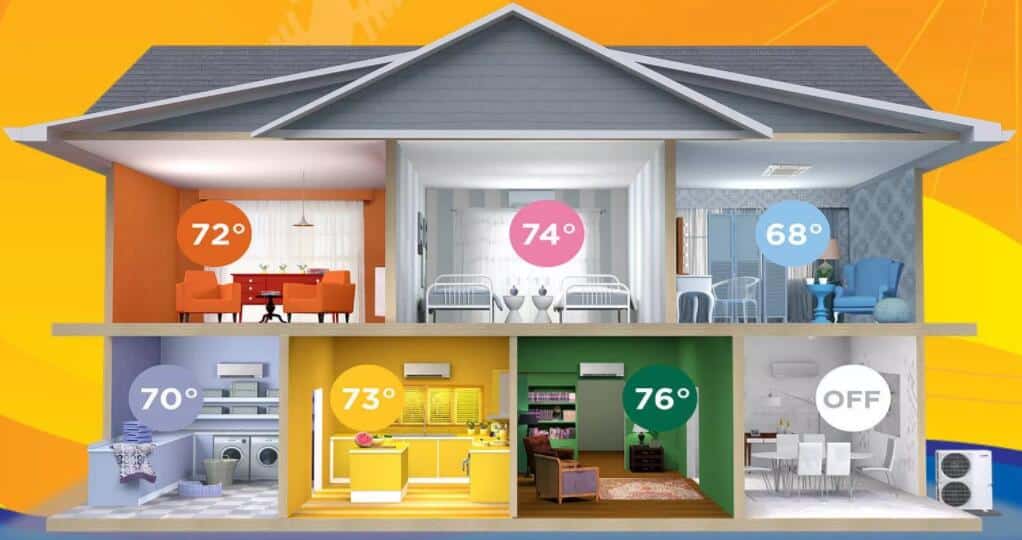
Zoning Systems for Better Control
Benefits of Zoning in Historic Homes
Zoning allows you to divide your home into different areas or “zones,” each with its thermostat and control settings. This means you can heat or cool specific areas as needed, leading to more efficient energy use and increased comfort.
For instance, you can keep the living room warm during the evening while allowing bedrooms to stay cooler. Additionally, zoning reduces energy waste by only conditioning the rooms you are using, making your HVAC solutions more cost-effective and environmentally friendly.
Implementing Zoning Systems
Installing a zoning system involves adding dampers within your ductwork to control the airflow to each zone. Modern zoning systems are designed to work with both traditional and high-velocity HVAC systems, making them suitable for various types of historic homes.
Professional installation is recommended to ensure the system is set up correctly and efficiently. Proper installation and calibration of the dampers and thermostats ensure that your HVAC solutions provide optimal comfort and energy savings across all zones in your historic home.
Smart Thermostats and Home Automation
Integrating smart thermostats and home automation with your zoning system can further enhance control and efficiency. Smart thermostats learn your preferences and adjust settings automatically, while home automation allows you to control your HVAC system remotely using a smartphone or tablet.
This technology can help you maintain an optimal indoor climate without constant manual adjustments. Moreover, smart thermostats can provide insights into your energy usage patterns, allowing you to fine-tune your HVAC solutions for even greater efficiency and comfort.
Retrofitting vs. Replacing
Pros and Cons of Retrofitting Existing Systems
Retrofitting involves upgrading or modifying parts of your current HVAC system to improve efficiency and performance. This approach can be less invasive and more cost effective than a full replacement.
It allows you to maintain much of your home’s existing infrastructure, which is ideal for preserving its historic character.
However, retrofitting may not always provide the same level of efficiency and performance as a new system and might have limitations based on the age and condition of your current HVAC system.
When to Consider Complete Replacement
A complete replacement might be the best option if your existing system is outdated, frequently needs repairs, or can’t meet your home’s heating and cooling needs efficiently.
Modern HVAC systems offer superior efficiency, better air quality, and advanced features that old systems can’t match. While the upfront cost can be higher, the long-term savings on energy bills and maintenance can make it a worthwhile investment.
Maintenance and Upkeep of HVAC Systems in Historic Homes
Ensuring that your HVAC system is well-maintained is crucial for both its efficiency and longevity, especially in historic homes.
Regular upkeep helps maintain comfort, improves energy efficiency, and preserves the integrity of your home’s architecture. Here’s how you can keep your HVAC system running smoothly and extend its lifespan.
Regular Maintenance Tasks
Regular maintenance tasks are essential to keep your HVAC system in top condition.
- Replace or clean air filters every 1-3 months: This ensures proper airflow and reduces strain on the system.
- Inspect and clean the outdoor unit regularly: Remove debris such as leaves, dirt, and twigs that can obstruct airflow and reduce efficiency.
- Schedule annual professional inspections: Professionals can check for any potential issues and ensure all components are functioning correctly.
- Clean the ductwork periodically: This prevents dust and allergens from circulating through your home, improving indoor air quality and system efficiency.
Consistent attention to these tasks can help maintain the efficiency and reliability of your HVAC system in your historic home.
Tips for Extending the Lifespan of Your System
Extending the lifespan of your HVAC system involves more than just regular maintenance; it requires mindful usage and proactive care.
- Use a programmable thermostat: Maintain consistent temperatures and reduce system workload to avoid unnecessary wear and tear.
- Ensure proper insulation: This helps your HVAC system work more efficiently, reducing the need for constant heating or cooling.
- Avoid overworking your system: Use fans, shades, and natural ventilation when possible to maintain a comfortable temperature.
- Stay attentive to unusual noises or performance issues: Address them promptly to prevent minor problems from becoming major repairs.
Implementing these strategies will ensure your HVAC system remains durable and effective, enhancing the longevity of your historic home’s comfort.
Troubleshooting Common Issues
Identifying Common HVAC Problems
Common issues with HVAC solutions in historic homes include strange noises, inconsistent temperatures, and unexpected increases in energy bills. If your system is making unusual sounds, it could indicate loose parts or debris in the ducts.
Uneven temperatures might be a sign of blocked vents, poor insulation, or a malfunctioning thermostat.
Additionally, a sudden spike in energy bills may suggest that your HVAC solutions are not operating efficiently, possibly due to leaks or outdated components.
DIY Fixes vs. Professional Repairs
For minor issues with your HVAC solutions, some DIY fixes can be effective. Changing the air filter regularly, clearing debris from around the outdoor unit, or checking and resetting the thermostat are simple tasks homeowners can perform.
These steps can often resolve minor problems and improve system efficiency. However, more complex problems like refrigerant leaks, electrical issues, or significant component failures should be addressed by a professional to avoid further damage and ensure safety. Attempting to fix these without proper knowledge and tools can lead to more serious issues.
When to Call an Expert
If you’ve tried basic troubleshooting for your HVAC solutions and the problem persists, it’s time to call in an expert. Signs that professional help is needed include frequent cycling on and off, weak airflow, or water leaks.
Professionals can accurately diagnose and fix these issues, ensuring your system runs smoothly and efficiently. Relying on their expertise not only ensures a proper repair but also helps maintain the integrity and efficiency of your historic home’s HVAC system.
Discover the Perfect HVAC Solutions for Your Historic Home Today!
Is your historic home in San Diego or El Cajon struggling with outdated HVAC solutions? At One Hour Heating & Air Conditioning San Diego, we specialize in seamlessly integrating modern comfort into your classic property without compromising its charm.
Our expert team is ready to tackle the unique challenges of historic homes, ensuring efficient and reliable HVAC systems tailored to your needs.
Don’t let your home’s age be a barrier to comfort. Contact us today at 619-639-4017 to schedule a consultation and discover how we can enhance your historic home’s comfort and efficiency with our innovative HVAC solutions.
FAQs About HVAC Solutions
What are the best HVAC options for historic homes?
The best HVAC solutions for historic homes include central air conditioning, ductless mini-splits, geothermal heat pumps, and high-velocity HVAC systems. These options provide efficient climate control while preserving the architectural integrity of your home.
How often should I service my HVAC system in a historic home?
It’s recommended to service your HVAC solutions at least twice a year, ideally in the spring and fall. Regular maintenance ensures that the system runs efficiently and can prevent costly repairs. This routine check-up helps in maintaining optimal performance and prolongs the system’s lifespan.
Can modern HVAC systems be installed without damaging my historic home’s structure?
Yes, modern HVAC solutions can be installed with minimal impact on your home’s structure. Systems like ductless mini-splits and high-velocity HVACs are designed to be less invasive and maintain the home’s aesthetic appeal. These solutions are perfect for preserving both the functionality and beauty of historic properties.
What should I do if my HVAC system isn’t heating or cooling my home properly?
Start by checking the thermostat settings, replacing the air filter, and ensuring that vents are not blocked. If the problem persists, it’s best to call a professional to diagnose and fix the issue. Prompt professional intervention can prevent further complications and restore comfort to your home.
Is it better to retrofit my existing HVAC system or replace it entirely?
Retrofitting your HVAC solutions can be a cost-effective and less invasive option, preserving much of the existing infrastructure. However, a complete replacement may offer better efficiency, performance, and long-term savings, making it a worthwhile investment for your historic home.

